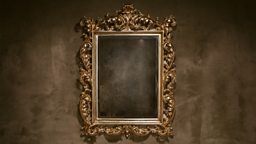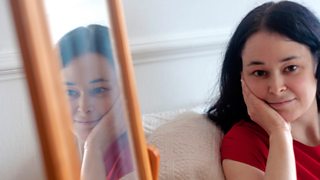On reflection: Eight mysterious facts about mirrors
In the recent Radio 4 documentary Mirrored, created by multi-award-winning documentary-maker Cathy FitzGerald, we took a chronological journey through life - from childhood to old age - via a series of interviews recorded with people as they confronted their reflection in the mirror. It was very revealing. There is undoubtedly something peculiar about mirrors. They give us an opportunity “to see ourselves as others see us”, as well as allowing us to practice our sexy face, important speeches and give us the creeps in the dark. Here are our 8 unsettling mirror facts...

A glimpse into the future
Magic mirrors were used by the witches of Thessaly in the 3rd century who wrote their oracles on them in blood. They were used by ‘readers’ called specularii, who used them to see the past, present and future as well as whether or not you had lipstick on your teeth.
The real Snow White was believed to be a Bavarian Baroness
Mirror, mirror
Mirrors were often believed to take in and store what they reflect for use later. This could be the foundation for the famous Snow White mirror. The real Snow White was believed to be a Bavarian Baroness, whose father remarried in 1743. The new stepmother favoured her children from her first marriage, and received a mirror as a gift from her new husband. It was referred to as a ‘Talking Mirror”, as the mirrors of Lohr in Bavaria were of such quality that they were believed to ‘always speak the truth’. It can still be seen today at the Spessart Museum in the Lohr Castle.
Bloody Mary
Ever played Bloody Mary? Don’t. It’ll scare the pants off you. You are dared to go into the bathroom, close the door, and say “Bloody Mary” three times. She then pops out of the mirror behind you and you scream the place down. Try it. Dare you.
Friends in high places
In China, mirrors were used to focus and capture energy, mostly the moon’s. Allegedly one Emperor of China became emperor because of his use of a ‘magic mirror’. Qin Shi Huang, the first Emperor of the Qin Dynasty in AD 25 claimed his mirror allowed him to see the inward qualities of those who looked into it.
Good luck
There are many mirror superstitions. If you break a mirror, you can obviate the Roman seven years bad luck curse (they believed life renewed itself every seven years so the unrenewed soul would be stuck in the broken mirror) by picking up all the pieces and place them in a paper or fabric bag. Throw it in a fast-flowing river, which will carry away the misfortune. Or you can bury it in soil. Actors believe that it is bad luck to see their reflection while looking over the shoulder of another person.
When the dead were laid out in Victorian times, all the mirrors were veiled to prevent the soul getting trapped
Drawing a veil
In Victorian times, when the dead were laid out before the funeral, all the mirrors in the house were veiled to prevent the soul getting trapped in the mirror. This was practised across the world including in England, Scotland, America, China, Madagascar, the Crimea and Bombay. The custom still persists when Jewish families sit shiva.
Fangs for the memory
Some ancient cultures believe that mirrors reflected the ‘shadow soul,’ the true nature of the person being reflected. This could have been the origin of vampires and demons not having reflections, as Buffy well knew, as they have no souls to reflect.
Making a mirror
Nowadays mirrors are made using aluminium powder, but the Egyptians used polished copper. Copper was associated with Hathor who presides over beauty, cosmetics, love, sex, fertility and magic. Aztec mirrors were made from Obsidian, and the Aztecs believed they were linked to Tezcatlipoca, a deity whose name translates as Smoking Mirror. He was the Lord of the Night and used mirrors to cross between the earthly realm and the underworld.
Next time you snatch a quick glimpse of yourself on your way out, have a quick check that it’s just you in there. Not Mary Queen of Scots, Dracula, Tezcatlipoca or anyone else... you never know.
More from Radio 4...
-
![]()
Mirrored
A chronological journey through life captured in the mirror.
-
![]()
Six ways you speak French every day without realising it
Thank the Anglo-Normans for introducing us to a lot of French words.
-
![]()
Seven things you didn't know about organic food
From dancing cows to health benefits - some fascinating facts about organic.
-
![]()
The death and rebirth of Zora Neale Hurston
Once forgotten, this African-American writer is now revered.




